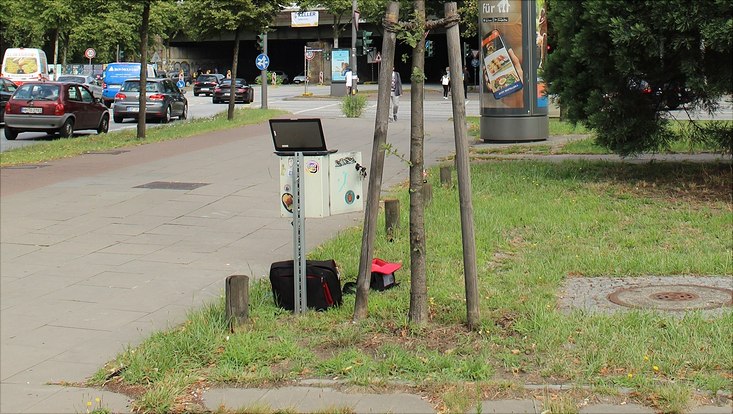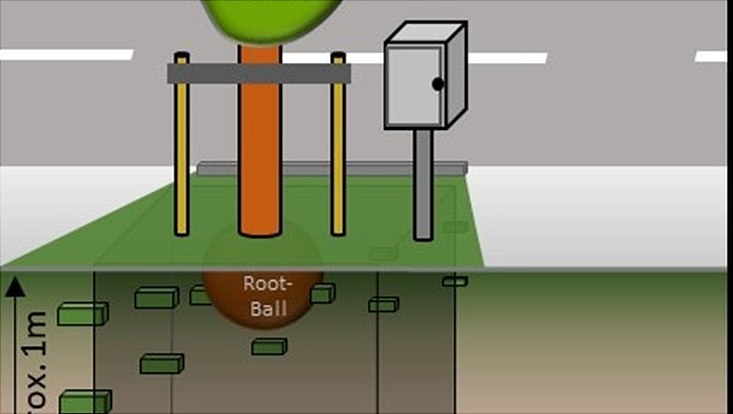19 August 2022
Due to drought and heatYoung trees in Hamburg left high and dry

Photo: UHH/Schütt
From 2016 to 2019, the doctoral researcher has been collecting data on water availability, comparing these with meteorological and site-specific data. The results have now been published in Urban Forestry and Urban Greening. They reveal that the lack of water became critical in all investigated root areas and at all sites. In 2018 and 2019, this was even the case for 3 to 5 months.
The analysis reveals that 3 factors were crucial for water availability: periods of precipitation lasting more than 10 days; the age of the trees; and the ground temperature. Based on these and other factors, we can calculate and predict lack of water for trees in the future using data-based models.
The lack of water will increase as climate change continues. In particular, new trees planted along streets are subject to great stress, stagnate in their development, and do not live long—this much we now know. The trees often die before they reach 30, even though they can live for up to 150 years.
For the availability of plant-accessible water, the size of the plant pit is vital. However, the examined plant pits were on average fewer than 2 cubic meters where scientists recommend 12 cubic meters. “In the city, we often find small plant pits and surrounding them, pure sand, which cannot really store water. Or even physical barriers such as building rubble or sewage pipes,” says Schütt. “So at the least the plant pit, along with the soil, has to be sufficiently large.”
If chosen and added correctly, the substrate, meaning the self-mixed soil in the plant pit, should ensure sufficient water and oxygen. If, however, the tree roots grown into sandy soil, they cannot completely access the water stores due to poor water conductivity.
To reduce the risks of a long-term lack of water, the sites need first and foremost to be properly prepared. The city also needs to water the trees regularly for several years, including outside the immediate roots; choose tree species adapted to dryness and hot urban climates; and avoid the rise in paving and density of surrounding ground. Simply watering poorly planted trees is not sufficient.

